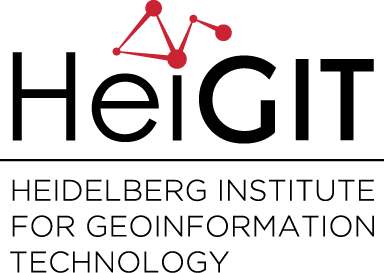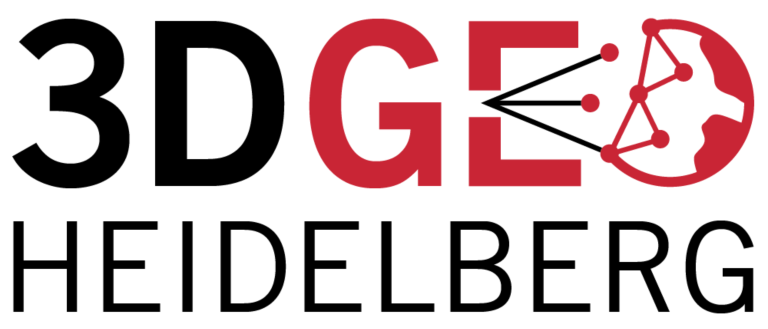Category: Publications
-
New paper on the automatic characterization of surface activities from 4D point clouds
An approach for automatic characterization of surface activities from large 4D point clouds is presented in a new paper by Daan Hulskemper et al. in collaboration between the 3DGeo research group and the departments of Geoscience and Remote Sensing and Coastal Engineering at TU Delft. Hulskemper, D., Anders, K., Antolínez, J. A. Á., Kuschnerus, M.,…
-
Open Data: Multi-platform point clouds and orthophotos of the inland dune in Sandhausen
The commune Sandhausen (Baden-Württemberg) got its name from the inland dune, which is located in the area of the village. In 2021 and 2022, the 3DGeo group of Heidelberg University conducted UAV-based and ground-based surveys of three areas of the inland dune of Sandhausen to acquire 3D point clouds and orthophotos. The dataset is freely and…
-
Improved Performance of HELIOS++ using High Performance Computing Techniques
The software HELIOS++ simulates the laser scanning of a given virtual scene that can be composed of different spatial primitives and 3D meshes with distinct granularity. The high computational cost of this type of simulation software demands efficient computational solutions. Classical solutions based on GPU are not well suited when irregular geometries compose the scene…
-
New(s) story about Sensing Mountains Summer School 2022
The fourth edition of the Innsbruck Summer School of Alpine Research took place in September 2022, finally back in the lovely mountain landscape of the Ötztal valley in Tyrol, Austria. Once again, 40 participants – young researchers from all over the world – gathered in Obergurgl to learn and exchange about new concepts and solutions…
-
New paper: Capturing complex star dune dynamics – repeated highly accurate surveys combining multitemporal 3D topographic measurements and local wind data
Morphologies of highly complex star dunes are the result of aeolian dynamics in past and present times. These dynamics reflect climatic conditions and associated forces like sediment availability and vegetation cover, as well as feedbacks with adjacent environments. However, an understanding of aeolian dynamics on star dune morphometries is still lacking sufficient detail, and their…
-
Human-in-the-loop development of spatially adaptive ground point filtering pipelines — An archaeological case study
LiDAR data have become indispensable for research in archaeology and a variety of other topographic applications. To derive products (e.g. digital terrain or feature models, individual trees, buildings), the 3D LiDAR points representing the desired objects of interest within the acquired and georeferenced point cloud need to be identified. This process is known as classification,…
-
Integrating Bird Observations from Community Projects and Social Media
Environmental developments create an ever increasing need for monitoring and protection measures. These efforts are often based on digital or technical solutions like data analyses or modelling. Yet, in order to enable effective, reliable and large scale environmental monitoring and protection techniques, large information volumes are required. In a recently published paper, we analyse different…
-
UndercoverEisAgenten on the road
The UndercoverEisAgenten team is still on the road introducing their most recent results to the public and scientific community. On July 2, visitors to the Alfred-Wegener-Institut Helmholtz-Zentrum für Polar- und Meeresforschung (AWI) at the “Long Night of Sciences” Berlin + Potsdam tested an UndercoverEisAgenten permafrost crowdmapping application. The UndercoverEisAgenten team also participated in the GI Salzburg 2022 conference from July 4th through 7th. They discussed…
-
Data description paper: Individual tree point clouds and tree measurements from multi-platform laser scanning in German forests
New data description paper on our tree point cloud dataset was just published Today, our data description paper was published in the open access Journal Earth System Science Data: Weiser, H., Schäfer, J., Winiwarter, L., Krašovec, N., Fassnacht, F. E., and Höfle, B. (2022): Individual tree point clouds and tree measurements from multi-platform laser scanning…
-
Understanding spatiotemporal trip purposes of urban micro-mobility from the lens of dockless e-scooter sharing
Over the last two years, we have witnessed the ever-fast growth of micro-mobility services (e.g., e-bikes and e-scooters), which brings both challenges and innovations to the traditional urban transportation systems. For example, they provide an opportunity to better address the “last mile” problem due to their convenience, flexibility and zero emission. As such, it is…
-
3DGeo contributions to ISPRS Congress 2022 now online
From 5 June – 11 June 2022 the ISPRS Congress took place in Nice, France. The 3DGeo research group had three paper contributions which can now be found online: (1) Virtual Laser Scanning of Dynamic Scenes Created From Real 4D Topographic Point Cloud Data. Find all details in the video (link) and paper and check…
-
Leveraging OpenStreetMap and Multimodal Remote Sensing Data with Joint Deep Learning for Wastewater Treatment Plants Detection
Humans rely on clean water for their health, well-being, and various socio-economic activities. During the past few years, the COVID-19 pandemic has been a constant reminder of about the importance of hygiene and sanitation for public health. The most common approach to securing clean water supplies for this purpose is via wastewater treatment. To date,…


